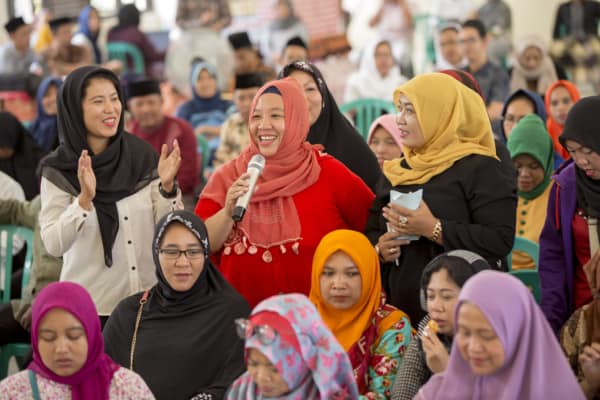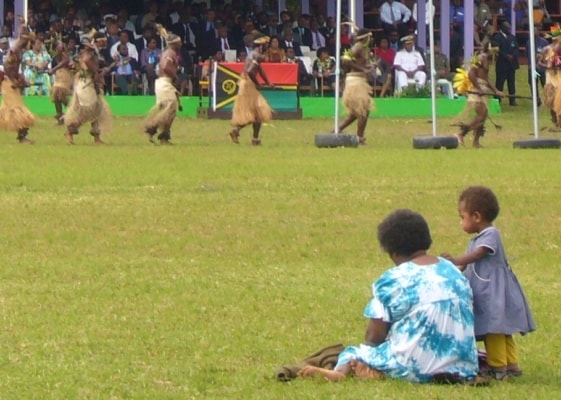Image: Woman in Nepal (Stephan Bachenheimer / World Bank).
Thinking and Working Politically presents development to us as an endeavour embedded within power structures. This is so important.
It helps us see clearly that we need to understand domestic politics to deliver development outcomes. Who are the players? Who makes decisions? Who will stand to lose from a proposal and how can they block progress?
But now we need to take the next step – and realise that there are many forms of power.
Power theorists have framed power in a variety of ways. I quite like the ‘power over’, ‘power to’, ‘power with’ framework. ‘Power over’ is the ability to get people to do something that they otherwise wouldn’t. This is the way we generally see power today, and I think it is usually how we see power in TWP.
Thinking and Working Politically presents development to us as an endeavour embedded within power structures. This is so important.
It helps us see clearly that we need to understand domestic politics to deliver development outcomes. Who are the players? Who makes decisions? Who will stand to lose from a proposal and how can they block progress?
But now we need to take the next step – and realise that there are many forms of power.
Power theorists have framed power in a variety of ways. I quite like the ‘power over’, ‘power to’, ‘power with’ framework. ‘Power over’ is the ability to get people to do something that they otherwise wouldn’t. This is the way we generally see power today, and I think it is usually how we see power in TWP.
Yet authority is not only positional or hierarchical, and if we only look at people in visible positions of authority, we will miss most of the story. Power pervades society. And some forms of power are so ubiquitous they are almost invisible. In the jargon, this is hegemony – where power becomes seen not as a construct that could be challenged and dismantled, but as the ‘natural order’ of things.
And so gender relations are generally seen as ‘natural’ arrangements or even individual choices, or, particularly in the development context, value-neutral cultural arrangements. Too often, I think, we just don’t see gender. Even if we do see it, we see gender equality as a social issue, and equate gender analysis with social analysis. In other words, not part of the main game.
The result is that gender has too often been, as Evie Brown puts it, the power relationship that Political Economy Analysis forgot.
Recently, I am pleased to be able to say, there has been a convergence of interest – if modest – in gender analysis and TWP. We are beginning to see ways in which both approaches can work together to advance our understanding and improve development outcomes.
Because gender is a primary system of power. As Diana Koestler has said, our understandings of power may themselves be the result of men’s power over women. Our systems of power are derived from historical arrangements made by men to maintain power over other men. And to do this they often controlled women.
Greater gender equality is correlated, in a number of studies, with lower resort to domestic terrorism and to intra- and inter-state violence. While correlation is obviously not causation, a gender and power analysis offers explanations that I find exciting.
When women are seen as property, other men become potentially hostile competitors. And where you see power as a zero sum game, you are more likely to resort to the ‘power over’ approach of armed violence or insurrection. One of the drivers of violent extremism, insurrection or armed conflict is a willingness to advance one’s cause at another’s expense, violently. We are seeing this scenario play out in ISIS now. ISIS needs women – subjugated women – to maintain the systems of power they are building amongst male players.
The women’s movement has long been working with this political understanding of gender relations. Gender and power have been at the centre of gender and development theory for decades. As far back as the 1980s, Mayra Buvinic pointed out that effective integration of gender equality into development programming requires a clear understanding of the political processes in which development actors work.
And of course we can’t forget the old feminist adage that the personal is political. It reminds us that gender relations frame the incentives of women and men differently and define interests. It shows us how the dominant patterns of power play out in our daily lives, and allows us to notice that they are replicated throughout society and in our personal gendered relations.
It also helps us to see alternative ways that power is exercised. Too often we start by looking at those in power, yet people with very little power know well how to navigate authority and can tell us a lot about how we can support change.
So – understanding gender relations and inequality could improve the TWP approach. Equally, importing TWP thinking into gender equality work could ensure gender analysis becomes increasingly sophisticated. And, given the connections between gender analysis and political economy analysis, we need to be speaking with one voice.
We’re already on the same page in talking about the need for flexibility, rolling design and iterative implementation. DFAT’s major gender equality programs – Pacific Women, Empowering Indonesian Women for Poverty Reduction and the newly designed Investing in Women Initiative – are all underpinned by these approaches.
Working together, we could land joint positions on how to conceptualise power more broadly, building in understandings of gender relations to improve the effectiveness of our analysis. Taking a gender sensitive and TWP approach, we can explore how we can work with women and civil society to disrupt power structures that are not helpful to development.
And, let me add, we need to apply a power analysis to our own position in the development hierarchy. It could give us the degree of humility we need to get over ourselves.









